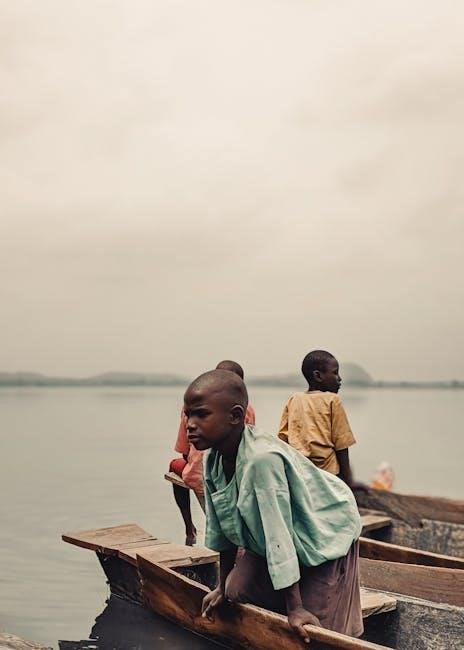Éric-Emmanuel Schmitt’s Monsieur Ibrahim et les Fleurs du Coran explores themes of spirituality, identity, and interfaith dialogue through the bond between a young Jewish boy, Momo, and his mentor, Monsieur Ibrahim, a wise grocer in 1960s Paris. This poignant story delves into existential questions, offering insights into human connection and self-discovery.
Overview of the Topic
Monsieur Ibrahim et les Fleurs du Coran by Éric-Emmanuel Schmitt is a poignant narrative set in 1960s Paris, exploring themes of identity, spirituality, and interfaith dialogue. The story follows Momo, a young Jewish boy grappling with adolescence and isolation, who finds solace in an unlikely friendship with Monsieur Ibrahim, a wise Muslim grocer. Despite outward appearances, Monsieur Ibrahim reveals deeper truths about his origins and beliefs, challenging Momo’s perceptions. Through their bond, the novel delves into existential questions, cultural dynamics, and the transformative power of mentorship, offering a rich tapestry of human connection and self-discovery.
Significance of the Book
Monsieur Ibrahim et les Fleurs du Coran holds profound significance as a narrative that bridges cultural and religious divides. It explores universal themes of identity, belonging, and spirituality through the unlikely friendship between Momo and Monsieur Ibrahim. The book challenges stereotypes and fosters interfaith understanding, making it a powerful tool for dialogue. Its introspective tone and emotional depth resonate with readers, offering insights into the human condition. As part of Éric-Emmanuel Schmitt’s Trilogie de l’Invisible, it highlights the invisible threads that connect people across cultures and beliefs, leaving a lasting impact on readers worldwide.
Structure of the Article
This article provides a comprehensive analysis of Monsieur Ibrahim et les Fleurs du Coran, exploring its themes, characters, and cultural significance. It begins with an introduction to the book’s premise, followed by an overview of Éric-Emmanuel Schmitt’s background and literary style. The plot summary delves into the setting of 1960s Paris and the transformative journey of the protagonist, Momo. Character analysis highlights the mentorship of Monsieur Ibrahim and the impact of other significant figures. Themes such as spirituality, identity, and interfaith dialogue are examined, along with their philosophical underpinnings. The article concludes with a reflection on the book’s relevance and its enduring legacy.

Author Background
Éric-Emmanuel Schmitt, born in 1960 in Belgium, is a renowned French author, philosopher, and playwright. His works explore themes of spirituality, identity, and human connection.
Éric-Emmanuel Schmitt’s Biography
Éric-Emmanuel Schmitt, born in 1960 in Belgium, is a prominent French author, philosopher, and playwright. He gained recognition for his thought-provoking works that explore spirituality, identity, and human connection. Schmitt’s writing often delves into existential themes, blending philosophy with narrative storytelling. His notable works include The Visiteurs and Oscar et la Dame Rose. Schmitt’s literature reflects his deep exploration of human nature and the quest for meaning. His ability to combine philosophical insights with accessible storytelling has made him a respected figure in contemporary French literature.
His Literary Style and Themes
Éric-Emmanuel Schmitt’s writing is characterized by a unique blend of philosophical introspection and narrative simplicity. His works often explore themes of spirituality, identity, and human connection, inviting readers to reflect on existential questions. In Monsieur Ibrahim et les Fleurs du Coran, Schmitt employs a lyrical prose to weave a story of interfaith dialogue and self-discovery. His use of symbolism, such as the Quranic flowers, adds depth to the narrative, while his ability to balance emotional and intellectual elements creates a compelling reader experience. Schmitt’s style resonates with readers seeking both literary enrichment and philosophical insight.
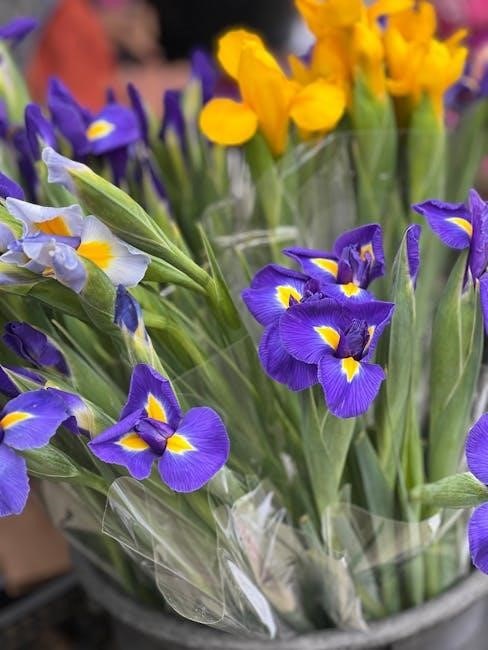
Plot Summary
In 1960s Paris, a young Jewish boy named Momo faces existential struggles and finds guidance through his unlikely friendship with Monsieur Ibrahim, a wise grocer.
Setting: Paris in the 1960s
The story unfolds in Paris during the 1960s, specifically in the vibrant and culturally diverse neighborhood of Belleville. The setting reflects a city undergoing change, where traditions and modernity coexist. The protagonist, Momo, navigates the streets of this bustling area, encountering a mix of cultures and ideologies. The iconic “rue Bleue” (Blue Street) serves as a central location, though its name contrasts with its actual appearance, symbolizing the disparity between expectations and reality. This backdrop of urban life in 1960s Paris provides a rich tapestry for the exploration of identity, spirituality, and human connection.
Protagonist: Momo’s Journey
Momo, a young Jewish boy in his early teens, grapples with identity and belonging in 1960s Paris. Feeling disconnected from his family and community, he embarks on a journey of self-discovery. His friendship with Monsieur Ibrahim, a wise and enigmatic mentor, becomes a pivotal force in shaping his understanding of spirituality and life. Through his experiences, Momo learns to navigate the complexities of adolescence, cultural identity, and existential questions, ultimately finding a sense of purpose and belonging.
Antagonist: The Challenges Momo Faces
Momo faces numerous challenges, including feelings of loneliness and disconnection from his family and community. His adolescence is marked by confusion and a search for identity, exacerbated by the complexities of growing up in a diverse Parisian neighborhood. The societal expectations and cultural dynamics further complicate his journey, as he struggles to reconcile his Jewish heritage with the broader world around him. Additionally, the initial misunderstandings about Monsieur Ibrahim and the realities of life in the “rue Bleue” add layers of complexity to his experiences, testing his resilience and forcing him to confront difficult truths about himself and his surroundings.
Key Events and Turning Points
The story unfolds through pivotal moments that shape Momo’s journey. His initial encounter with Monsieur Ibrahim marks the beginning of a transformative relationship. As their bond deepens, Momo learns about the Quranic flowers, symbolizing spiritual growth. A turning point occurs when Momo discovers Ibrahim’s true identity, challenging his perceptions. The narrative reaches its climax when Momo must confront the realities of Ibrahim’s past and his own identity. These events collectively guide Momo toward self-discovery and a deeper understanding of humanity, marking his transition from adolescence to maturity.
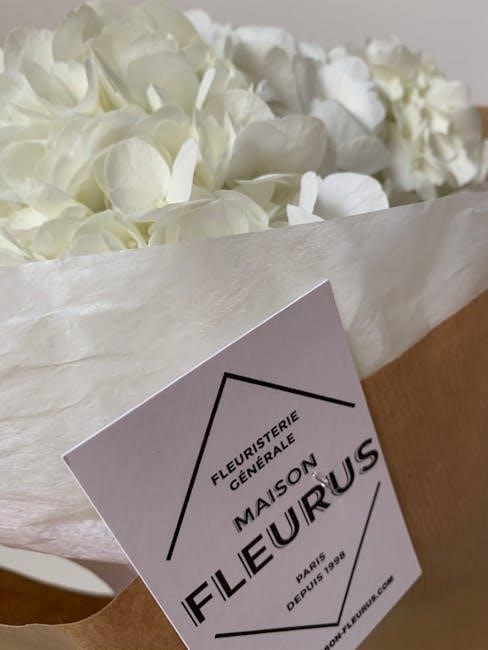
Character Analysis
Momo, a young Jewish boy, navigates adolescence and identity crises, finding guidance in Monsieur Ibrahim, a wise, enigmatic mentor. Their bond transforms Momo’s life profoundly.
Momo: The Protagonist
Momo, a 13-year-old Jewish boy, is the heart of the story, navigating adolescence and a sense of disconnection in 1960s Paris. His journey is marked by self-discovery and existential questioning, as he struggles to find his place in the world. Through his relationship with Monsieur Ibrahim, Momo learns valuable life lessons about spirituality, identity, and belonging. His transformation from a lost teenager to a more self-aware individual is central to the narrative, highlighting themes of growth and the impact of mentorship.
Monsieur Ibrahim: The Mentor
Monsieur Ibrahim, the wise and enigmatic grocer, becomes Momo’s spiritual guide. Despite appearing as an Arab shopkeeper, he reveals himself as a Sufi from the Golden Crescent, offering profound life lessons. Through their bond, Ibrahim introduces Momo to the Quranic flowers, symbolic of divine wisdom, fostering a deep sense of spirituality and belonging. His mentorship transcends cultural boundaries, providing Momo with a sense of purpose and identity. Ibrahim’s teachings emphasize love, tolerance, and self-discovery, making him a pivotal figure in Momo’s journey toward understanding himself and the world around him.
Other Significant Characters
Beyond Momo and Monsieur Ibrahim, the story features a cast of characters who shape Momo’s world. His parents, emotionally distant and preoccupied, contribute to his sense of abandonment. The neighbors on Rue Bleue, each with their own struggles, add depth to the narrative. These characters, though secondary, highlight the universal human search for meaning and connection. Their presence underscores the themes of identity and belonging, enriching Momo’s journey under Monsieur Ibrahim’s guidance. Together, they create a vivid tapestry of life in 1960s Paris, exploring themes of spirituality and intercultural understanding.
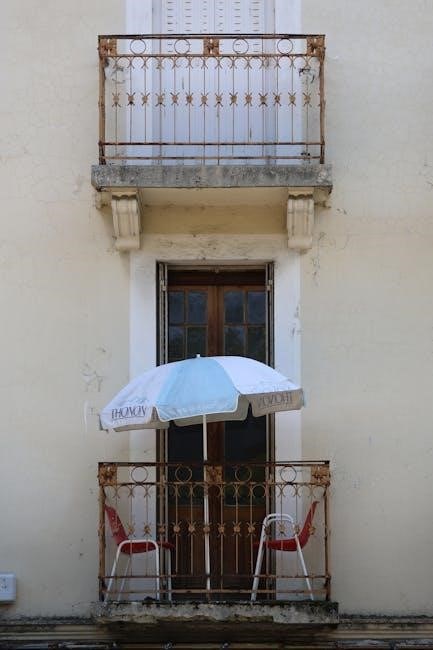
Themes and Symbolism
The novel explores spirituality, identity, and interfaith dialogue, with Quranic flowers symbolizing spiritual growth. Momo’s journey reflects self-discovery and the universal quest for meaning and belonging.
The Theme of Spirituality
Spirituality is a central theme in Monsieur Ibrahim et les Fleurs du Coran, as Monsieur Ibrahim introduces Momo to Sufism, emphasizing inner peace and universal truths. The Quranic flowers symbolize spiritual growth and enlightenment, reflecting Momo’s journey from confusion to self-discovery. Through their conversations, Monsieur Ibrahim teaches Momo that spirituality transcends religion, focusing on love, compassion, and understanding. This theme is deeply intertwined with identity, as Momo learns to reconcile his Jewish heritage with broader spiritual truths. The story highlights how mentorship and interfaith dialogue can foster profound spiritual awakening, resonating with readers seeking meaning in a diverse world.
The Symbolism of the Quranic Flowers
The Quranic flowers in Monsieur Ibrahim et les Fleurs du Coran symbolize spiritual growth, wisdom, and enlightenment. Each flower represents a lesson or virtue Momo learns from Monsieur Ibrahim, such as compassion, humility, and love. These flowers are not physical but metaphorical, embodying the teachings of Sufism and the universal truths Monsieur Ibrahim imparts. They reflect Momo’s journey from adolescence to self-discovery, illustrating how spirituality can bloom in unexpected ways. The flowers also serve as a bridge between different cultures and faiths, highlighting the book’s themes of interfaith dialogue and the pursuit of inner peace in a diverse world.
The Concept of Identity
The concept of identity in Monsieur Ibrahim et les Fleurs du Coran is central to Momo’s journey. As a Jewish boy in a diverse Parisian neighborhood, Momo grapples with his sense of self, belonging, and purpose. Monsieur Ibrahim, a wise mentor, helps him navigate these questions, revealing that identity transcends labels like religion or culture. Through their bond, Momo learns to embrace his uniqueness while understanding the shared humanity that connects people across differences. The story explores how identity is shaped by relationships, experiences, and self-reflection, ultimately showing that true identity is a journey of discovery and acceptance.

Philosophical and Cultural Insights
The novel explores Sufism’s wisdom, emphasizing love and unity. It bridges cultural divides, showcasing Paris’s diversity and fostering interfaith understanding through Momo and Monsieur Ibrahim’s bond.
Sufism and Its Influence
Monsieur Ibrahim et les Fleurs du Coran deeply explores Sufism, a mystical dimension of Islam, emphasizing love, humility, and self-discovery. Monsieur Ibrahim, a Sufi sage, teaches Momo the beauty of spiritual growth through Quranic wisdom and the symbolism of flowers. His journey from the “Golden Crescent” reflects Sufism’s universal message of unity and inner peace. The novel highlights how Sufi philosophy transcends religious boundaries, fostering a deeper understanding of human connection and the divine. This influence shapes Momo’s identity and worldview, illustrating Sufism’s power to transform lives.
Interfaith Dialogue in the Story
The narrative of Monsieur Ibrahim et les Fleurs du Coran beautifully portrays interfaith dialogue through the unlikely friendship between Momo, a Jewish boy, and Monsieur Ibrahim, a Muslim grocer. Their bond transcends religious boundaries, fostering mutual respect and understanding. Monsieur Ibrahim introduces Momo to Sufi wisdom and Quranic teachings, while Momo shares his Jewish heritage, creating a rich exchange of spiritual ideas. This dialogue not only challenges stereotypes but also highlights the universal truths that unite people across faiths. Their relationship exemplifies how interfaith connections can enrich lives and promote tolerance in a diverse world.
Cultural Dynamics in Paris
Monsieur Ibrahim et les Fleurs du Coran captures the cultural tapestry of Paris in the 1960s, particularly in the diverse neighborhood of Belleville. The story highlights the coexistence of Jewish and Muslim traditions, blending seamlessly into the city’s vibrant fabric. Momo’s journey reflects the challenges and richness of growing up in a multicultural environment, where identities are shaped by heritage and shared human experiences. The cultural dynamics of Paris serve as a backdrop for themes of belonging and understanding, illustrating how the city’s diversity fosters connections across faiths and backgrounds.
Friendship and Mentorship

Friendship and Mentorship
Monsieur Ibrahim’s guidance transforms Momo’s life, offering wisdom and spiritual insight. Their bond exemplifies the power of mentorship, fostering growth and understanding beyond cultural boundaries.
The Bond Between Momo and Monsieur Ibrahim
The relationship between Momo, a lost adolescent, and Monsieur Ibrahim, a wise grocer, is rooted in mutual respect and trust. Ibrahim, a Sufi mentor, guides Momo through life’s challenges, sharing Quranic wisdom and fostering spiritual growth. Their bond transcends cultural and religious divides, offering Momo a sense of belonging and purpose. Ibrahim’s teachings help Momo navigate identity struggles, while Momo’s curiosity and openness enrich Ibrahim’s life. This unlikely friendship becomes a source of strength and transformation for both, highlighting the power of intergenerational and interfaith connections in overcoming adversity and finding meaning.
Lessons Learned from the Relationship
Momo learns valuable life lessons from Monsieur Ibrahim, including the importance of spirituality, self-acceptance, and the interconnectedness of all beings. Ibrahim teaches Momo about Sufism and the Quranic flowers, symbolizing spiritual growth and inner peace. Their bond highlights the power of mentorship and interfaith dialogue, showing how different cultures and beliefs can harmonize. Momo discovers his true identity and gains confidence, learning to embrace life’s uncertainties. The relationship underscores the value of wisdom, compassion, and the transformative impact of human connection in overcoming adversity and finding one’s path in life;
Impact on Momo’s Life
Monsieur Ibrahim’s guidance profoundly transforms Momo’s life, helping him navigate adolescence and identity struggles. Through their bond, Momo gains emotional resilience, discovering the value of spirituality and self-acceptance. Ibrahim’s teachings about Sufism and the Quranic flowers inspire Momo to embrace his uniqueness and find purpose. Their relationship fosters a sense of belonging and inner peace, enabling Momo to overcome feelings of alienation and insecurity. Ultimately, Monsieur Ibrahim’s wisdom and compassion empower Momo to face life’s challenges with confidence and clarity, leaving a lasting imprint on his personal growth and worldview.
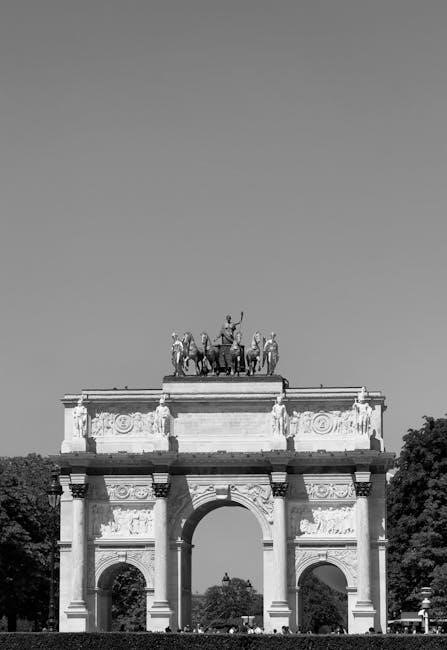
Reception and Legacy
Monsieur Ibrahim et les Fleurs du Coran has garnered critical acclaim and awards, translated into many languages, including a popular PDF version. It remains a beloved modern classic, inspiring readers and scholars.
Reader Reviews and Feedback
Readers worldwide have praised Monsieur Ibrahim et les Fleurs du Coran for its emotional depth and timeless themes. The PDF version has been widely downloaded, with many appreciating its availability in multiple languages. Reviewers highlight the story’s ability to foster interfaith understanding and its heartfelt portrayal of mentorship. Scholars have commended the narrative’s philosophical insights, while readers find it thought-provoking and inspiring. The book’s exploration of identity and spirituality resonates deeply, making it a cherished read. Its enduring popularity has solidified its place as a modern classic, earning accolades and a loyal readership across cultures and generations.
Academic Analysis and Criticism
Scholars have praised Monsieur Ibrahim et les Fleurs du Coran for its nuanced exploration of interfaith dialogue and existential themes. The PDF version’s accessibility has facilitated global academic engagement. Critics highlight its thoughtful portrayal of cultural dynamics and the mentor-student relationship, while some argue its philosophical depth could be further explored. Academics commend the narrative’s ability to transcend cultural boundaries, offering insights into identity and spirituality. The book’s inclusion in Schmitt’s Trilogie de l’Invisible underscores its thematic richness. Overall, it remains a significant work in contemporary literature, sparking meaningful discussions in academic circles.
Awards and Recognition
While Monsieur Ibrahim et les Fleurs du Coran has not received major literary awards, its profound impact and popularity have earned it widespread acclaim. The PDF version’s accessibility has contributed to its global recognition, with readers praising its thoughtful exploration of spirituality and identity. Scholars and critics frequently highlight its nuanced portrayal of interfaith dialogue, making it a significant work in contemporary literature. The book’s inclusion in academic curricula further underscores its intellectual and cultural value, fostering meaningful discussions worldwide.

Availability and Formats
The PDF version of Monsieur Ibrahim et les Fleurs du Coran is widely available for download online. It has been translated into multiple languages, including French and German, and can be accessed through various platforms. Readers can easily find and download the PDF format, ensuring global accessibility to this insightful literary work.
PDF Version of the Book
The PDF version of Monsieur Ibrahim et les Fleurs du Coran is readily available online, offering readers a convenient format to explore Éric-Emmanuel Schmitt’s profound narrative. This digital version ensures accessibility across various devices, allowing readers to engage with the story of Momo and Monsieur Ibrahim anytime, anywhere. The PDF format preserves the original text’s integrity, making it ideal for academic or personal reading. Many online platforms provide free or paid downloads, enabling global access to this timeless tale of spirituality and human connection. The PDF version is a popular choice for its portability and ease of use.
Translations and Editions
Monsieur Ibrahim et les Fleurs du Coran is available in multiple translations, including French, German, and Turkish, ensuring its universal appeal. The book exists in various formats, such as PDF, ePUB, and hardcover, catering to different reader preferences. It is part of Éric-Emmanuel Schmitt’s Trilogie de l’Invisible, emphasizing its thematic depth. Readers can access editions with additional commentary, questions, and postfaces, enhancing their understanding of the narrative. The availability of translated versions and diverse formats makes the story accessible to a global audience, fostering cross-cultural appreciation and reflection.
Where to Access the PDF
The PDF version of Monsieur Ibrahim et les Fleurs du Coran can be accessed through various online platforms. Websites like fr.annas-archive.org and borisehrets.com offer free downloads. Additionally, online libraries and e-book platforms provide access to the PDF, often requiring a reader or conversion tool. Users can also find the PDF on academic and cultural websites, ensuring wide availability for readers worldwide. This convenient access allows audiences to engage with the profound story and its themes effortlessly.

Analysis and Reflection
Monsieur Ibrahim et les Fleurs du Coran offers a rich exploration of identity, spirituality, and cultural dynamics, resonating deeply with readers through its timeless themes and emotional depth.
Themes of Belonging and Identity
The novel explores Momo’s struggle to find his place in the world, reflecting themes of belonging and identity. As a Jewish boy in Paris, Momo feels disconnected from his heritage and surroundings. His friendship with Monsieur Ibrahim, a Muslim grocer with a mysterious past, challenges his perceptions of identity. The story highlights how cultural and religious labels often mask deeper truths, as Monsieur Ibrahim reveals he is not Arab but from the “Golden Crescent.” Through their bond, Momo learns that identity is not fixed but shaped by experiences, relationships, and spiritual growth, ultimately finding belonging in unexpected places.
Philosophical Underpinnings
The novel delves into profound philosophical ideas, particularly through Monsieur Ibrahim’s teachings, which are rooted in Sufism. This mystical dimension of Islam emphasizes inner spirituality, love, and the pursuit of truth. Monsieur Ibrahim uses the metaphor of Quranic flowers to symbolize the blossoming of the soul through spiritual practices and self-reflection. The story encourages readers to question superficial identities and embrace a deeper understanding of existence. By exploring themes of interconnectedness and the universality of human experiences, the book offers a philosophical framework for finding meaning and purpose in life, transcending cultural and religious boundaries.
Societal Commentary
The novel serves as a poignant commentary on societal dynamics, exploring themes of multiculturalism and tolerance in 1960s Paris. Through Momo’s journey, Schmitt highlights the complexities of identity and belonging in a diverse urban setting. The relationship between Momo, a Jewish boy, and Monsieur Ibrahim, a Sufi mentor, underscores the possibility of harmony amidst cultural and religious differences. The story critiques superficial judgments and societal expectations, advocating for a deeper understanding of human connections. By portraying Paris as a mosaic of identities, the book reflects on the tensions and beauties of coexistence in a multicultural society.
Monsieur Ibrahim et les Fleurs du Coran is a profound exploration of spirituality, identity, and human connection, offering timeless insights into multicultural harmony and self-discovery.
Final Thoughts on the Book
Monsieur Ibrahim et les Fleurs du Coran is a captivating tale of self-discovery and interfaith understanding, set against the vibrant backdrop of 1960s Paris. Through Momo’s journey, Éric-Emmanuel Schmitt masterfully explores themes of spirituality, identity, and the power of human connection. The relationship between Momo and Monsieur Ibrahim serves as a heartwarming reminder of the bridges that can be built between different cultures and beliefs. Schmitt’s lyrical prose and profound insights make this story a timeless reflection on life’s essential questions, resonating deeply with readers of all backgrounds.
Relevance in Modern Context
Monsieur Ibrahim et les Fleurs du Coran remains deeply relevant today, offering timeless lessons on tolerance, spirituality, and the importance of human connection in a fragmented world. The story’s exploration of identity and interfaith dialogue resonates strongly in modern multicultural societies, where understanding and empathy are more crucial than ever. Schmitt’s narrative serves as a poignant reminder of the power of mentorship and the bridges that can be built between different cultures and belief systems, making it a universally relatable and inspiring read for contemporary audiences.
Recommendation for Readers
Monsieur Ibrahim et les Fleurs du Coran is a must-read for anyone seeking a story rich in emotional depth and philosophical insight. Readers interested in themes of identity, spirituality, and intercultural dialogue will find this book profoundly moving. It is particularly recommended for those who appreciate character-driven narratives and are looking to reflect on life’s essential questions. The PDF version is easily accessible online, making it convenient for readers to explore this timeless tale of mentorship and self-discovery.
